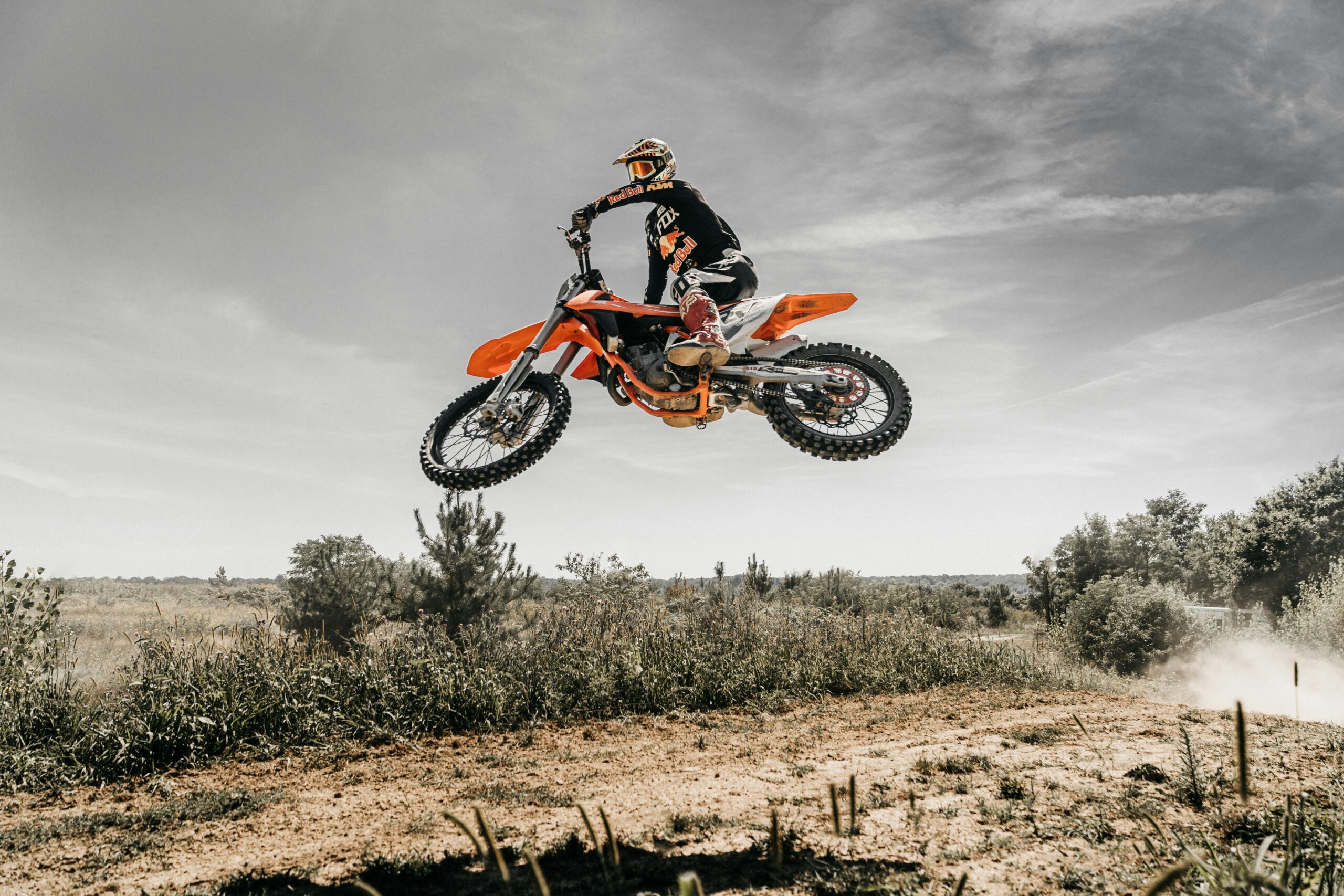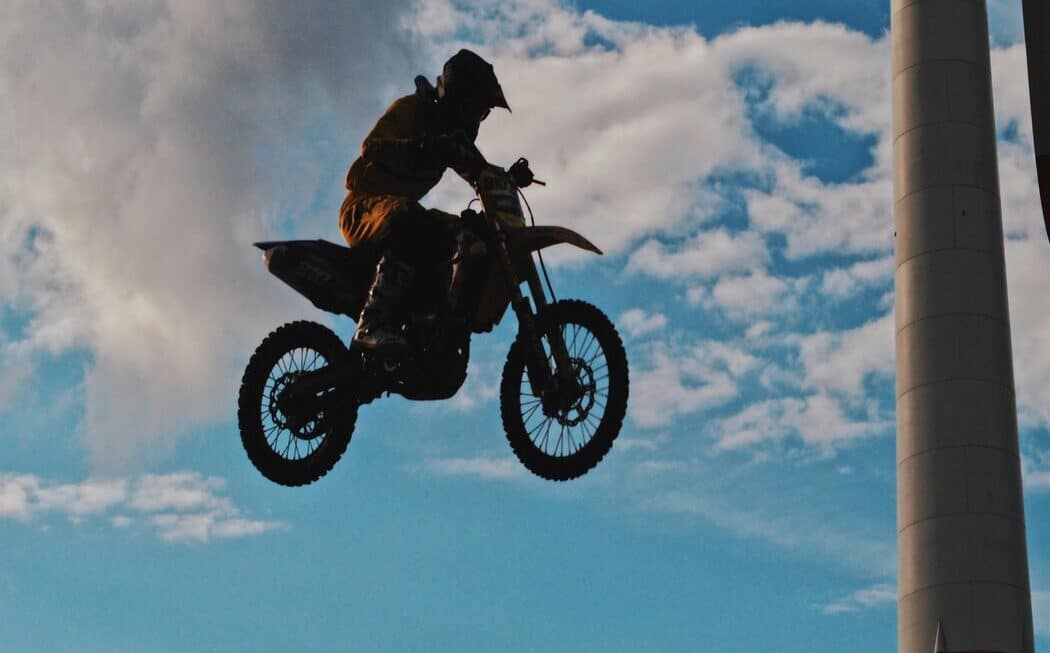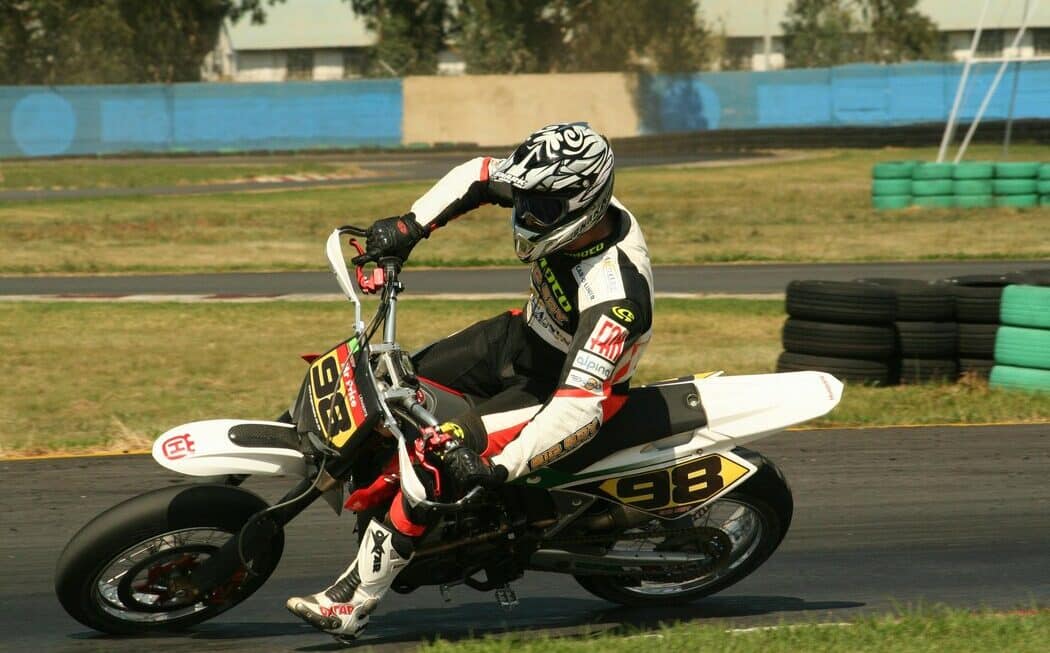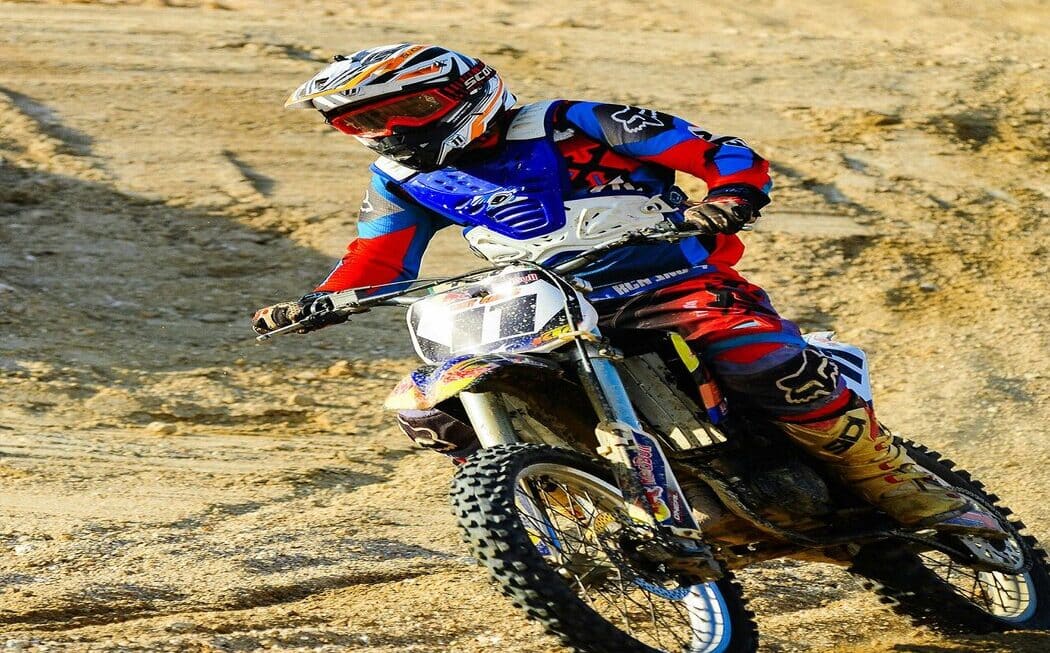Learning the necessary skills to jump your dirt bike can seem daunting but it is a thrilling experience when you finally take the plunge. Before you are ready for dirt bike jumps, you must master the basics of riding a dirt bike.
If you are an experienced rider, make sure to develop enough confidence in your abilities to pull off the jump successfully without any mishaps. Even if you feel like you have skill, starting small and working up to more challenging jumps is essential so that your body and mind have time to adjust properly. Mental preparation is just as important as physical when tackling a jump for the first time. Take into account every factor such as speed, distance between each jump within a series, how high the jump ramp should be set, and where the takeoff point should be relative to it when landing correctly. Knowing your capabilities will also help determine how big of a jump you can handle with their skill set and how much risk they are comfortable taking with each try at different sizes of jumps until they find what works best for them!
Basic Steps to Learn Dirt Bike Jumps:
These are the steps to jump safely and effectively:
Safety Precautions
Safety should be a top priority when it comes to dirt bike riding and jumping. Before you even get on the bike, make sure you’re wearing the necessary protective gear. A full-face helmet is a must, as well as knee and elbow braces. You should also invest in an armored chest protector, gloves, and boots. Not only for your comfort but also for your protection in case of an accident. These pieces of equipment will help keep you safe while riding dirt bikes and landing jumps.
Additionally, take the time to inspect your bike and make sure it’s in good working order before getting on it. Check the brake levels, tire pressure, suspension tension, chain tension, etc., for proper function. Once you’ve taken all these safety precautions into account you can proceed with any jumps or tricks you plan on doing knowing that everything is up to standard so that nothing goes wrong during your session.
Body Position
When learning dirt bike jumps, it’s crucial to have the proper body position. To begin with, riders should be standing on the bike and not sitting. Sitting can be a big issue as riders may not be prepared for their landing. A good rule of thumb is that the rider should keep their upper body at a 45-degree angle with their hips. The knees should also remain close to the bike while the feet face forward. Riders should always try and maintain a neutral position on the bike, neither too far forward nor too far back as this will balance out weight distribution for an effective takeoff and landing.
Additionally, make sure that you are bent ever so slightly at the waist. You do not want your body 100 percent upright, leaning in or bending over too much because you need some control to ensure you land properly and prevent from eating dirt when you come down off the jump. It’s important to practice these steps until they become second nature because consistency in jumping will increase your odds of success each time you hit the trail!
Dirt Bike Control
Learning proper bike control is an important component of mastering dirt bike jumps techniques. Acceleration needs to be done continuously, smoothly, and with a steady grip. Releasing the throttle before a jump can lead to your bike losing momentum and nose-diving. It’s vital to not go too fast either, as this can cause the back end of your bike to rotate upwards in the air. This carries with it additional risks that would usually be unplanned.
The best way to get into a comfortable jumping speed is by using the gearing properly – start small and progress through the gears as you gain more confidence in your overall control of the bike before eventually reaching full speed. Additionally, remember that there is no need to overtake any other bikers on track at all times; focus more on being confident in your jumper speed and consistency rather than smashing or surpassing everybody else faster times or bigger heights.
Landing
Landing is an important part of any jump and can make the difference between a successful trick and a costly mistake. After you’ve hit your jump, the next step is to land correctly. An effective landing should involve keeping your bike squeezed between your legs to ensure stability as it impacts the ground. Additionally, it is important to know which tire you are attempting to land on, typically symmetrically if possible. While landing on flat ground usually involves more weight distribution toward the rear tire, every situation will require its unique approach. It is important not to be too far back or forward, as this can result in an unstable landing.
Practice
Practicing dirt bike jumping is an important part of perfecting your skills. As you approach the jump, make sure to take it slow and go over the bumps multiple times before attempting to take off. This will allow you to get a feel for what’s ahead and ensure that you can properly adjust your speed and agility according to the terrain. Additionally, some issues such as balance and weight displacement may not be determined until you practice.
Different dirt bikes can also behave differently based on various factors including engine type, suspension setup, and size of the bike which makes having first-hand experience so necessary. This is why practice is key; even if you feel like everything is going perfectly on paper, it may appear differently while in action. Therefore, this step should not be overlooked and should be taken seriously if achieving success on jumps is one of your primary goals. With consistent practice and patience, mastery of riding over jumps will eventually come naturally – it just takes time!
Conclusion
When you are concerned about safety, you should follow some safety precautions. You should also practice on a flat terrain with an appropriate size of jumps. This allows the rider to get used to the motion of the bike, as well as become familiar with the launch and landing.
Proper positioning and focus play an important role in being able to control the bike while in mid-air, so these factors must be mastered before attempting any major jumps. You should also learn dirt bike controls to jump safely. It is also advised that protective gear such as helmets, elbow pads, gloves, and chest protectors must be worn at all times when riding off-road or doing any more complicated maneuvering like jumping. While learning how to jump safely, you should also learn how to land correctly. When you completely learn these things then do practice as much as you can. Good luck!



